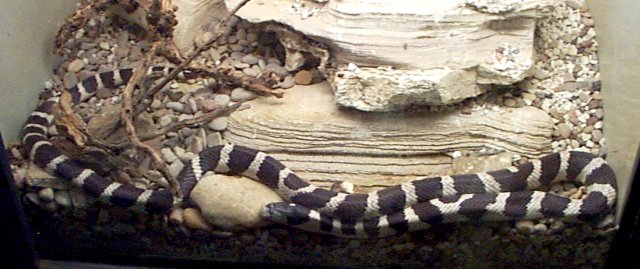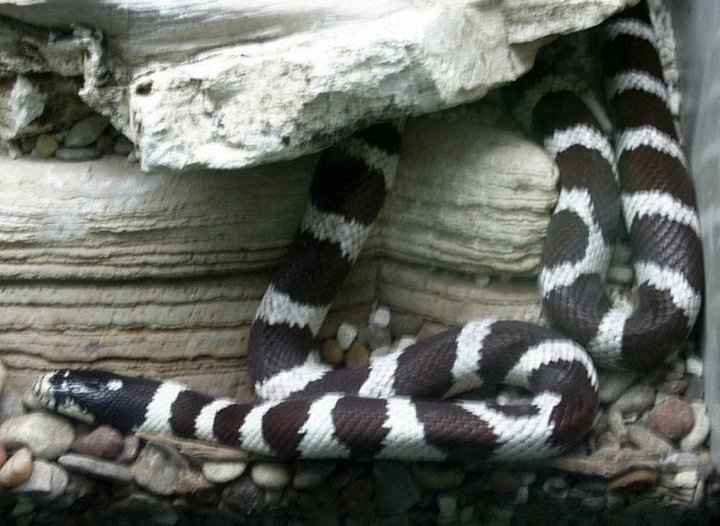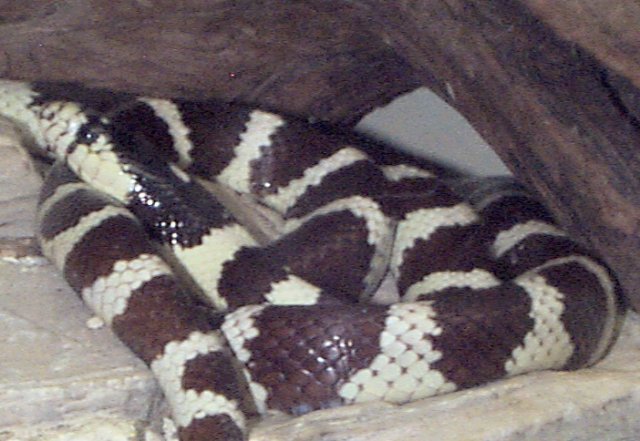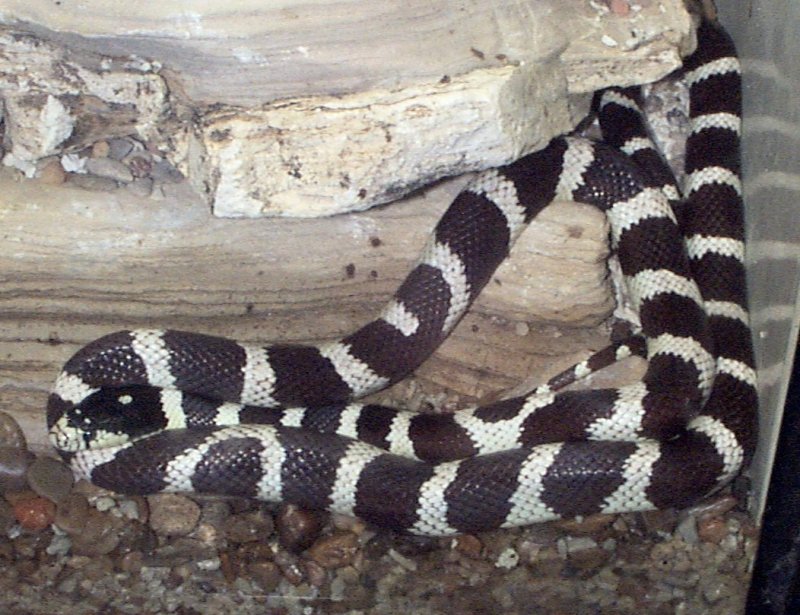[1].gif) Special anatomical, physiological
Special anatomical, physiological
or behavioral adaptations:
*
The Kingsnake's jaws are hinged, allowing them to swallow prey that
is larger than their head. They also have a tolerance towards
rattlesnake venom which enables them to kill and consume the rattlesnake.
If a large dose of venom is injected into the head or heart of the Kingsnake,
death may occur.
*
The California Kingsnake has many special features. It has a spine
consisting of 100-400 vertebrae and each vertebra is attached to a pair
of seperate, thin ribs. This anatomical adaptation allows the
snake to coil, climb and move in an S shape.
*
The Kingsnake can hear low frequency sounds and feel vibrations.
This enables them to sense an approaching animal well before the animal
actually reaches the area where the snake is located.
*
The Jacobson's organ and the snake's fork shaped tongue allow the snake
to smell its environment.

.gif) General
information:
General
information:

[1].gif) Special anatomical, physiological
Special anatomical, physiological 
